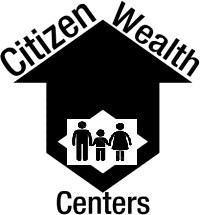Printed in Columbia Free Press by Wade Rathke
If an organizing committee is at the heart of building a community organization, how do you find the people who will join that committee? This definitely is not simply “add water and stir!”
Assuming we have already identified and defined the community, for an organizing committee to be effective, it will have to be representative of that community. All of the community!
If the community is geographical, that means ideally that the organizing committee will include active members from all points of the compass. Furthermore, the committee will also have to reflect the diversity of the community, racially and ethnically for sure, but also in terms of gender and possibly religion.
I say, ideally, because that is the task. That is not to say that failing to check every box means the organization cannot be built or be successful, but it is a critical part of the task because the beginnings do prejudice the ends. A dominant group that is unrepresented on the organizing committee will quickly determine that the organization is “not for them,” no matter what the leaders or organizers might say to the contrary. Prospective members will be looking for people in the back rows and at the front table who walk their walk and talk their talk to decide if the organization is really “theirs.”
We all know this is the reality, no matter what our rap or ideology might be. If there is a significant percentage of the community that is African-American yet only a few African-Americans are on the organizing committee, that will be reflected in the membership. And, vice versa, if whites or Hispanics or others are significant but not represented.
Why? Because the organizing committee members are the visible workhorses of the organizing drive until the launching of the organization in a formal meeting, and they are the invisible force of the organizing effort until leaders are democratically elected. They are the people one sees on the doors, giving the rap, and issuing the invitations to the meeting. They are the ones at the meetings with other community institutions encouraging them to participate or gaining a promise that they will be neutral and “wait and see” at the worse.
So, how do you find them?
You talk to “gatekeepers” in community centers, churches, union halls, recreation centers, social clubs, and local gathering spots. These people are not your potential organizing committee members usually, because they already see themselves, rightly or wrongly, as the community if they are community leaders, and they are often living outside the community as well. Any name you hear more than twice, you want to track down in order to measure whether or not they would be willing to join the OC and put in the work. When you find them, you want them to lead you to others.
What if you end up unbalanced in this early effort? Let’s say you have some people who seem ready to go, but the likely committee is not going to be balanced in the way required to build a powerful organization. A section of the map is blank. A major group is unrepresented. Time to grab someone and hit the doors cold in those areas and among those groups to prospect for the additional committee members you need. Do the work. Ask for help. You will find them if you are persistent. Incidentally, building and balancing the organizing committee in this way is as important in a workplace as it is in a community, if that’s you organizing task.
A frequent question is whether or not existing self- or externally-defined so-called community leaders are likely assets for an organizing committee in a newly forming community organization? Usually not. Often community leaders have the history and may be seen outside the community as having the base, but don’t have it anymore. Furthermore, they often look backward at what they know and where they’ve been, rather than forward at what they need to know now and where they need to go. Absolutely, some are great, but getting fresh legs and faces on the doors is a surer step forward.
Once again, the organizing committee, not the organizer, will be the face and voice of the emerging organization, so a new voice is heard more clearly if it can break through the sound and fury of the past. Whatever problems you are unable to solve in the constructing the organizing committee, you will have to solve during the organizing drive, so this stage is worth the time and effort to try to do it right.
